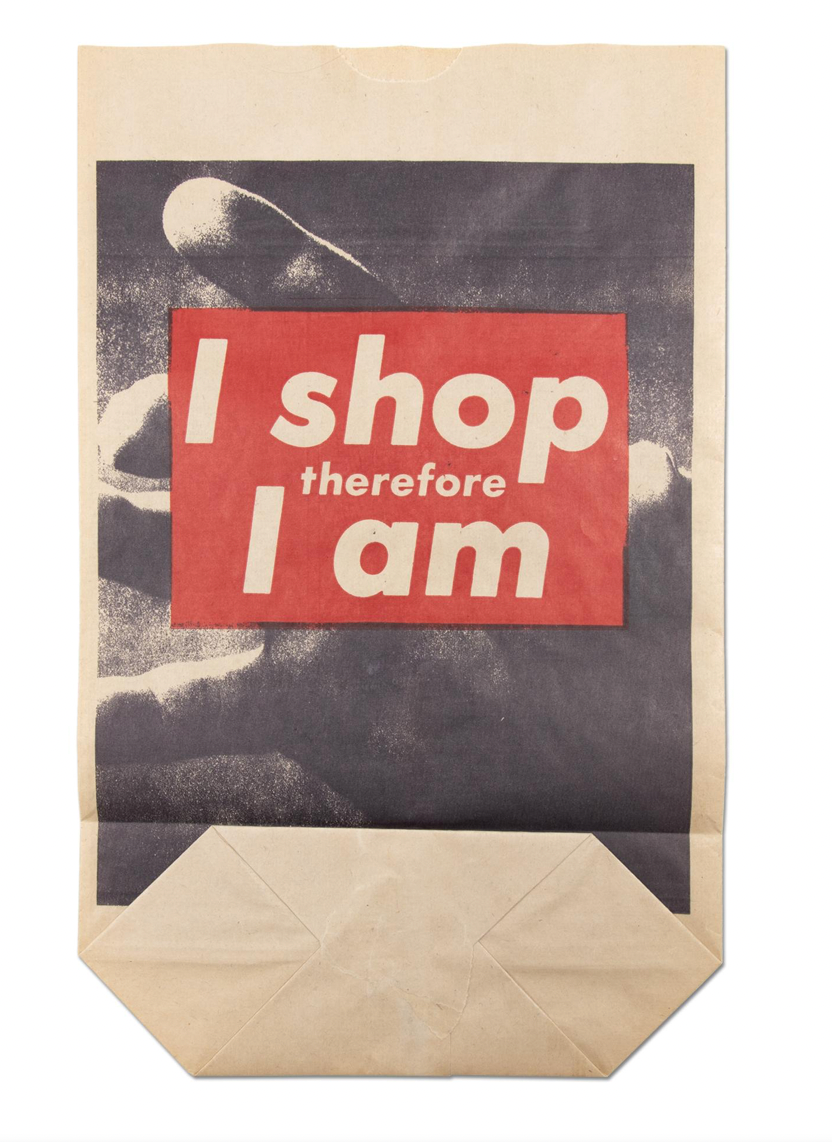Barbara Kruger's studio practice represents a distinctive synthesis of conceptual art strategies and commercial design methodologies, reflecting her background in graphic design and her critical engagement with media culture. Working between studios in Los Angeles and New York, Kruger has developed a production approach characterized by appropriation, digital manipulation, and strategic deployment across various contexts and scales.
Central to Kruger's technical process is her methodical selection and transformation of found imagery. For her signature photo-text works, Kruger typically begins by sourcing black-and-white photographs from vintage magazines, instructional manuals, and advertising from the 1940s-1960s. These found images are then cropped, enlarged, and sometimes reversed to create more powerful compositional arrangements. The text elements, initially handset in paste-up boards in her early career and later composed digitally, are meticulously arranged in her characteristic fonts—primarily Futura Bold Oblique or Helvetica Ultra Condensed—to create specific relationships with the photographic elements. This careful construction of the text-image relationship creates works that function simultaneously as visual statements and conceptual propositions.
For her large-scale installations, Kruger employs digital tools to adapt her designs to specific architectural contexts, often working with printers and installation specialists who can realize her precisely calculated environmental transformations. These room-wrapping installations require extensive pre-planning and site analysis to determine how viewers will physically experience the work as they move through the space. For these projects, Kruger functions more as a director or producer, overseeing teams of fabricators, printers, and installers who execute her designs according to detailed specifications.
What distinguishes Kruger's production method is her strategic adaptation of commercial design techniques to fine art contexts. Rather than concealing her commercial background, Kruger deliberately employs the visual effectiveness of advertising to deliver her conceptual content, creating a productive tension between medium and message. Her work acknowledges how commercial design shapes our visual environment while repurposing its strategies toward critical ends. This approach extends to her embrace of mechanical reproduction and, later, digital tools—media often viewed with suspicion in fine art contexts but central to Kruger's democratic conception of how art circulates and functions.
In recent decades, Kruger has expanded her practice to incorporate video, audio installations, and digital projections, adapting her distinctive approach to new technological contexts while maintaining consistent conceptual concerns. Throughout these evolutions in media and scale, Kruger has maintained remarkable consistency in her visual language while continuously finding new applications for her critical examination of power, identity, and representation through text and image.











